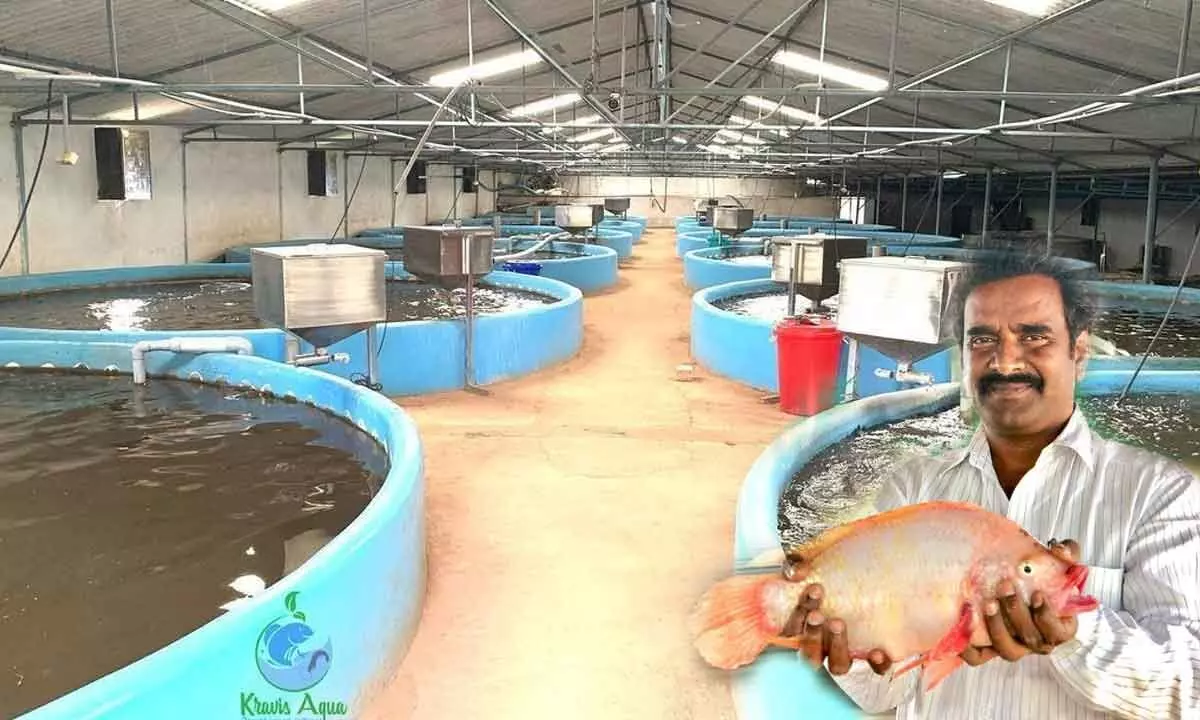Food For Thought: Be innovative to net bigger catch in aquaculture sector

Waste management and environmental effect reduction
RAS benefits vs Traditional fish farming
- Better fish quality
- Accelerated growth rates
- Higher conversion rate for food
- Strengthened biosecurity
- Decreased issues with communicable diseases
- Using less antibiotics
Hyderabad: Aquaculture, a centuries-old practice in Southern Asia, has undergone a transformative journey in recent times. From humble beginnings of raising fish in household ponds for personal consumption, it has evolved into a robust economic activity. The focus here is on the pivotal role of aquaculture in food production.
The Food and Agriculture Organisation (FAO) reports that global aquaculture production hit 114.5 million tonnes in 2018, valued at USD 263.6 billion. This surge, surpassing the growth in capture fisheries, highlights the global shift towards farming aquatic organisms to meet the escalating demand for protein.
In Southern Asia, with India leading the way, aquaculture has deep roots. India, the world's second-largest producer of farmed fish after China, contributes over eight per cent to the global production. This success is a testament to decades of research and development, particularly in breeding Indian Major Carps (IMCs) and introducing exotic carps.
While freshwater aquaculture historically dominated in India, the rapid growth of brackishwater aquaculture, especially in the production of whiteleg shrimp (LitopenaeusVannamei), has been noteworthy. India has become the second-largest global producer of this shrimp variety.
Beyond being a crucial source of food, aquaculture has emerged as a significant livelihood provider in Southern Asia. Despite the achievements, challenges like sustainable practices and environmental concerns persist. As the industry adapts and grows, it remains a beacon for addressing food security and fostering economic development in the region.
Vishwanadha Raju, from Hyderabad, has set an example in the field of aquaculture by introducing the Recirculating Aquaculture Systems (RAS) method. Notably, he is the first individual in Telangana to embark on this revolutionary approach.
With a background in horticulture, Vishwanadha Raju's journey is marked by remarkable innovations and a quest for knowledge. Despite facing financial constraints that halted his formal education after tenth grade, his determination led him to become an entrepreneur and the founder of Kravis Aqua Unit in Hyderabad.
The RAS method, implemented by Raju, aims to reduce the need for extensive manpower in both agriculture and aquaculture. Drawing inspiration from traditional aquaculture practices and recognising the challenges faced by fishermen, he discovered the RAS method being successfully employed in other countries. His vision expanded beyond personal endeavours as he founded Kravis Aqua Unit to not only implement RAS but also conduct workshops to share his knowledge with students.
RAS technology involves labor-intensive, indoor tank-based systems that prioritise water reuse through various treatment processes. This method allows for precise environmental control, enabling the cultivation of aquatic species beyond their typical climatic range.
Kravis Aqua Unit, under Raju's guidance, has successfully grown various fish species, including rainbow trout, pac, desi koi, pangasius, tilapia, and sea bass, through the RAS method. The unit also extends its impact by organising free monthly visits, providing insights into this innovative approach.
The benefits of RAS over traditional fish farming methods are substantial. It leads to better fish quality, accelerated growth rates, higher food conversion rates, strengthened biosecurity, reduced issues with communicable diseases, and a significant reduction in water and land usage. With a commitment to sustainability and innovation, Vishwanadha Raju's endeavours in aquaculture stand as an inspiration of progress in the industry.
















